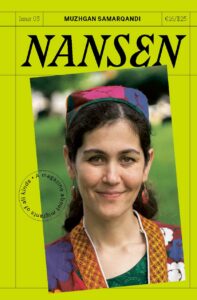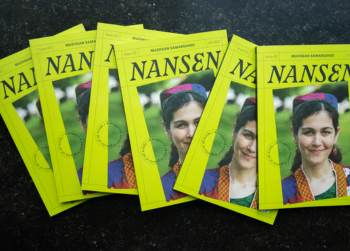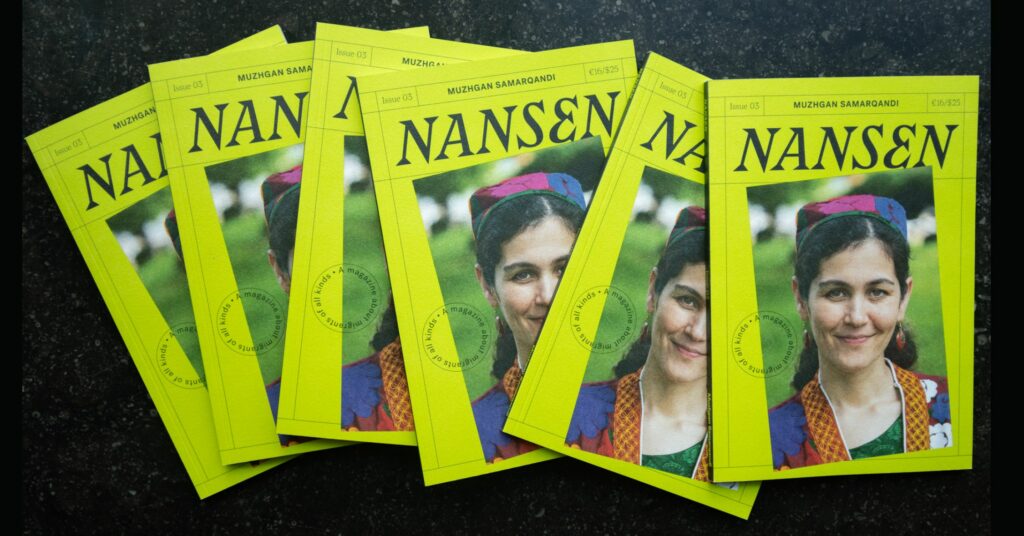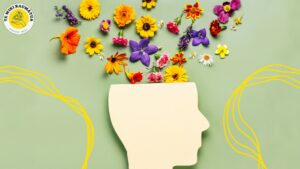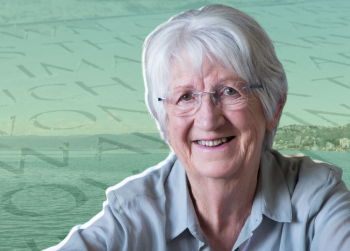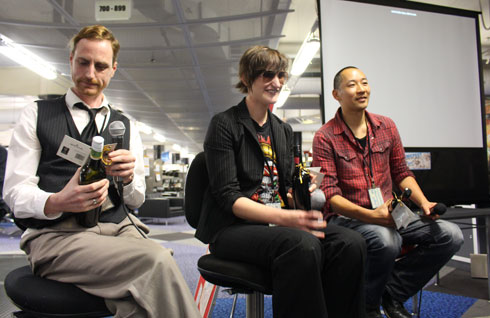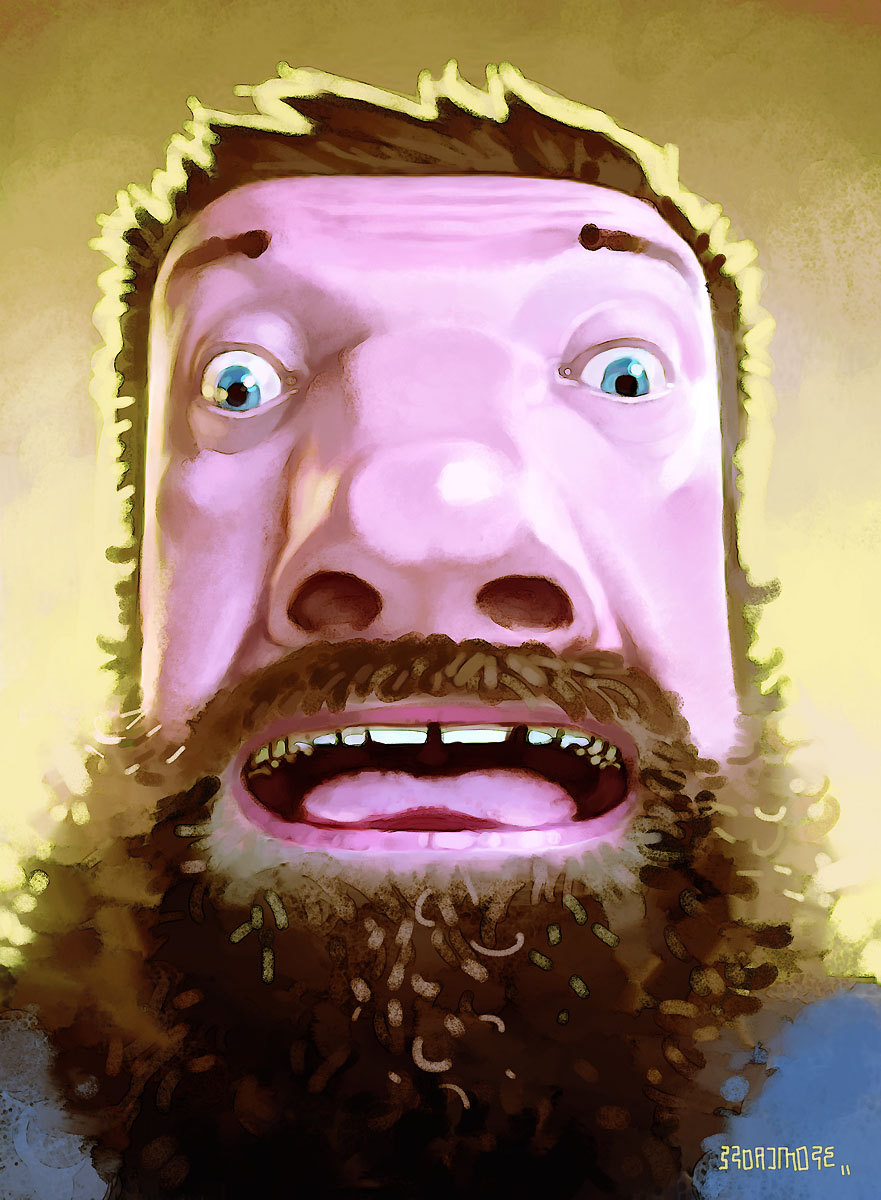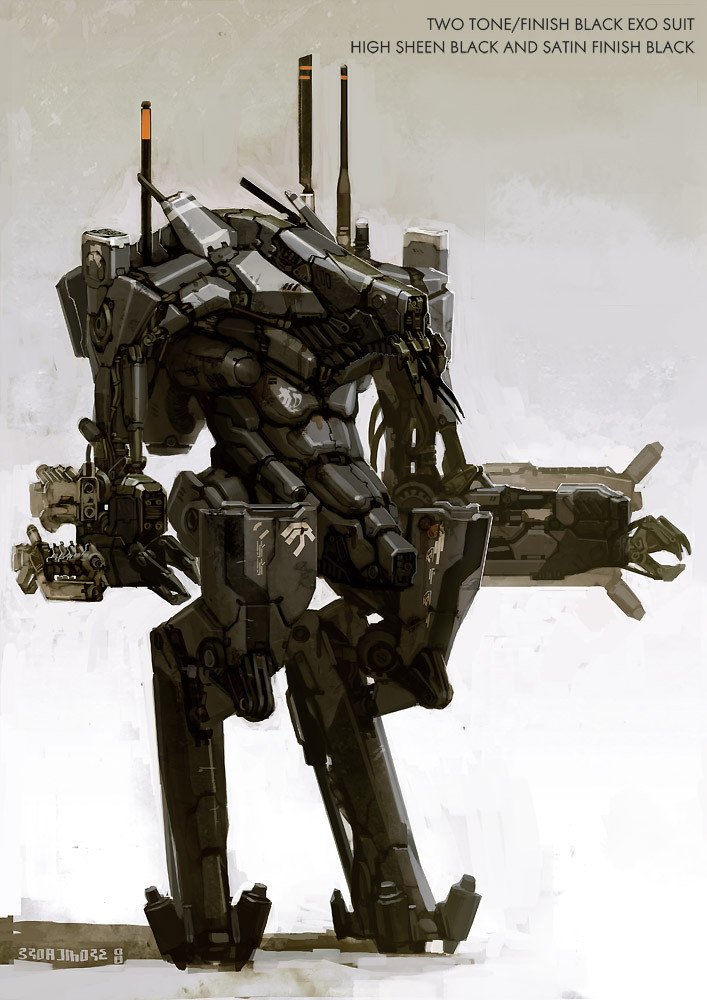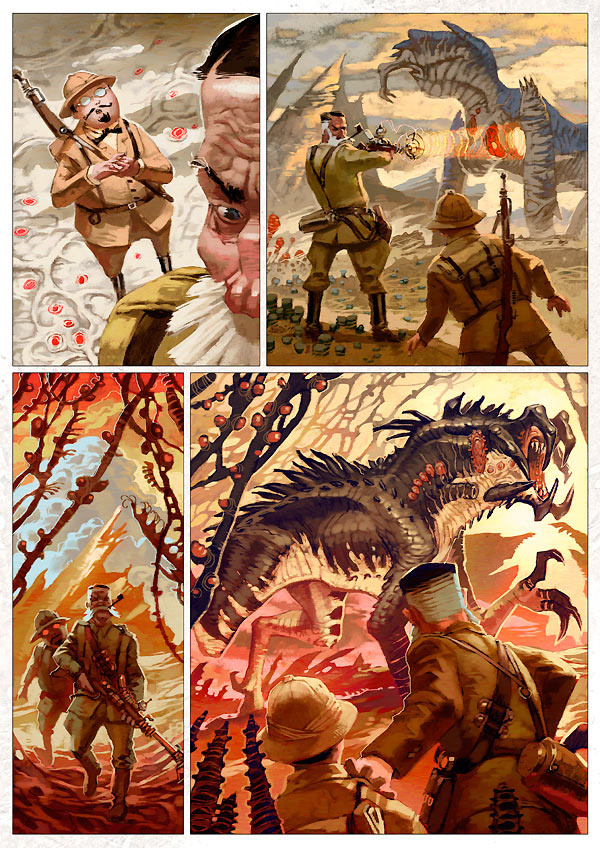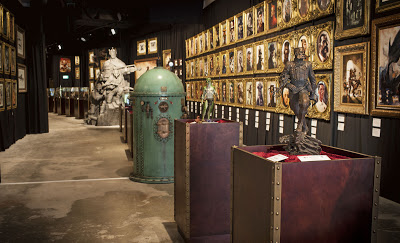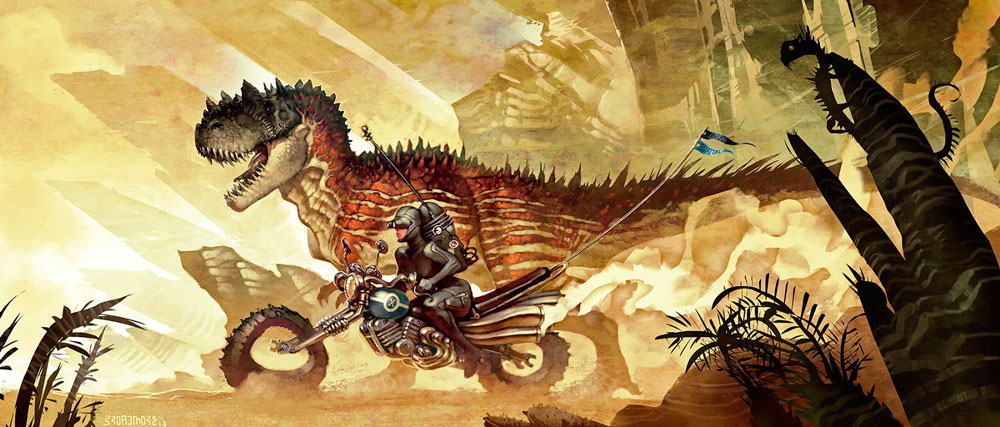 Leo Timmers, children’s author and illustrator, is in town for the New Zealand Festival’s Writers Week. This Belgian author has won multiple awards and had his book Who’s Driving translated into 12 languages.
Leo Timmers, children’s author and illustrator, is in town for the New Zealand Festival’s Writers Week. This Belgian author has won multiple awards and had his book Who’s Driving translated into 12 languages.
See Leo live at the Museum Art Hotel (Downstage Theatre) on Monday March 10th at 2:00pm
We have two of Leo’s books, both signed, to give away to one lucky individual thanks to Gecko Press. To win please tell us Leo’s home country by email to wclblog@gmail.com, Tweet @WCL_Library or comment on the post on our Facebook page. (We will announce a winner on the morning of Friday March 14th).
Justin from the library Online Services Team meet with Leo on Saturday morning. Here is their Q & A:
(J)How did you get into making books?
(L)Actually it started very early on. As a child when I was about 10-11 I was obsessed with comic books and I started drawing my first comic books when I was eight/nine. My father, he was an artist, he encouraged me a lot. He had the idea to publish these books himself, so I got my first book published when I was 11.
(J)That’s impressive!
(L)But of course it was self-publishing. We went to markets and book stores to sell them, so I was really publishing from very early on. But then after my high school diploma I studied graphic design. I kind of had enough of making comics because it takes such a long time to make one – so many pages, so many drawings. Maybe also because I started so early at such a young age I really wanted to do something else. I didn’t know what but at that time the was a publisher woman nearby that was doing for the first time great things with a local artist who was making an international, big name for herself. That was really the first time a children’s book artist in Belgium had a career. You could live from children’s books.
(J)Would that be because Belgium is a smaller country?
(L)It’s so small; it is about 11 million inhabitants.
(J)That’s still bigger than New Zealand!
(L)So you have to export you know, you have to do translations otherwise it’s too difficult. So she was one of the first whose work was published in many languages so I went to see that publisher because I thought that was something for me. So she looked at my work, which was really not much because I had only ever done comics. They gave me an assignment and said if you come back and do this right we will have something for you. So I started working on that and when I came back a month later they said okay we’ll give you this book and try it. That’s the way things got started. So I really started as an illustrator. I made many, many books which were written by other people. I had many styles because I had to re-invent myself as a children’s book illustrator. It was really difficult, when I look back on it. I didn’t have my own style; I was always searching and trying things. And on the other hand I got these texts and didn’t always know what to do with them. It took me about ten years to find out what I wanted to do, what style I wanted to work in. Ultimately I realised that I wanted to write my own stories and that was a big click for me when I decided I had had enough of this.
(J)Was it quite a sudden thing or did it build?
(L)It was quite a sudden thing at one point I did so many stories and I never had a feeling that it was what I wanted. And I thought well, if this is what I have to do for the rest of life I think I can do better. It was something like that, and I did it. I wrote something very simple and I made my own illustrations. It was the first time that I did that when I had the feeling that, okay, this finally works. I am happy with the final result; although it was a very simple story the illustrations were in a way more me. The strange thing was that I won a prize in Belgium with this book that gave me the courage to carry on along this route. As an illustrator it is very difficult to start writing because you think I am not a writer. You know, you look up to writers and think they are very good with words and can think of stories, while I’m just making pictures. I realised that making picture books was not like a real writer, pictures and story must work together in a way which is very difficult when you are just given text.
(J)Some of the best books have no words though.
Absolutely.
(J)I don’t know if you’re familiar with the Australian author Shaun Tan?
(L)Absolutely, he is such a big hero for me and there are many others. You are right; I started noticing the books I really liked, the picture books, all of them were made by an illustrator. I thought that must say something; the picture book medium is really the illustrators medium. Like movies are a Directors medium, it is a visual medium so it is important to start with the visuals and make sure they are really strong. If you work the other way around and mostly, not always, you start with text that is not so interesting to illustrate. There is not much there to show and I think a picture book must be told in a visual way. Once I realised that I started to get more sure of myself and then I started writing stories that were more elaborate in narrative. Every book is a bit like an experiment in writing, in trying things, like trying just one word; like, okay what can I do with just one word? Like Mr Renny, which is a bit autobiographical, about a painter and is totally different in the way it has been told. I like to for every book make it a bit of a challenge.
(J)Did you ever feel like you might want to give up?
(L)Give up?
(J)Yeah.
(L)Like stop it altogether? Every week I think. One thing that is hard when you do everything yourself is that you have to have a lot of confidence because you are the text department, illustrator. You are responsible for the total. That is sometimes hard, because sometimes you run in circles. You have to decide everything. If there is a text you can only concern yourself with the illustration but there is already a text. But if you are doing it all yourself you have to invent all the ideas, everything has to come out of you. That can make you very uncertain.
(J)The confidence is important then?
(L)Yes. You have publishers to deal with who may or may not like an idea, or you have foreign publishers when these books are presented in the big fairs, you get comments from a publisher here and there about they didn’t like this or didn’t like that. You have to be strong enough to know what you want and to not deviate too much. It’s very tricky. You have to stay close to yourself.
(J)When you decided to go it alone did you get any unexpected or negative reactions?
(L)Yes, certainly in that period when I was still searching for a style. Some of them worked really well and then the publisher said keep on making this kind of thing, while I felt inside, no, I needed to go a different way. For example this one [Who’s Driving?], my publisher said to make ten more like this. We can make Driving two, with two other cars, with other vehicles, and other animals. But for me it never felt okay.
(J)It’s done?
(L)It’s done. I’ve done this, new things. Although you don’t know if that new thing will catch on or be the same success or not. You never know. Every time is a risk, you never, never know. Sometimes you feel confident and really believe in this and it doesn’t happen. Other times you think well, I’m happy with it but, like Mr Renny, it’s a story about an artist that’s very complex and it did very well. You never know. For me the only thing is to stay close to what you think you need to do and just do that because your publishers don’t know either. They think they know but they don’t.
(J)It’s a gamble?
(L)It’s a gamble, yeah. But I can’t complain really, I’ve been lucky. I’ve worked really hard to get here, and it is still hard work but I can make these books. A lot of other things have come from this. I work on animation based on my books, we are developing a series. A lot of things have come which would not have happened if I at one point had not made that decision to do it all myself. Looking back on it I’m really happy.
(J)I just wanted to get back to 11-year-old Leo and his self publishing. Are you familiar with Zines?
(L)Yeah, you have that in Brussels. I think it’s more experimental Zines, you self publish and have exhibitions.
(J)Yeah, it’s a little bit guerrilla. What do you think of them?
(L)I think the self publishing is more and more important. The big publishers are very important and they will play a dominant role but with social media and all the ways to get your work out there you don’t need them as much. Before that you couldn’t get your work seen. You couldn’t get digital printing, computers, it’s so much easier to make your own book and get publicity. Maybe I’m too mainstream for this, I don’t know, but I always like it when I see them. You have to be strong to do that and believe in what you do. Me, I’m very focussed on telling stories in a very clear and understandable way. Not too complex, that’s way I look to do things.
(J)I think it can be quite alienating in a way, if it’s so complex that people don’t get it.
(L)I think it is important to have an audience, although maybe a small audience. I make children’s books and there are many children’s books that really aren’t for children. They may be beautiful and I love many of them but I know that because I read them to my children they are just too hard to understand for many children. Although they are many times about complex things and interesting things, very artistic, to me the first thing about children’s books is that children must understand it. Then you can add many other layers. What I try to do is work with different layers, so there is something underneath the simple story. For me the first level has to be a really surprising, clever story or idea that children can really understand without having to ask their mother or father. That’s why I strive for simplicity.
(J)What is your process?
It is a long, long process to make a book. It starts, always, with an image.
(J)What about this one [Who’s Driving?]?
(L)When I think about my initial plan and how they finally turned out it was completely different. It had more realistic backgrounds, not so sober. That was the first time I had all of the elements that later on become a bit of a trademark. It was the first time it all came together this one. Bang is maybe a better example. It started with two cars driving into each other and the follow up image showed what happened and that something had moved from one car to the other. When I have an idea like that I think that’s interesting, how can I now develop this? So the whole process starts with many, many sketches. I make many small dummies just to see how it works because this book is a thing that you hold in your hand. It really has to tell a story. Even the physical thing of turning the page, for example, this one [Bang] in all my first ten versions the cars drove from left to right. Because you read the book from left to right, but something was not right. I didn’t know what but then I suddenly realised you see what happens, you see this one coming, then something else happens. If you turn it around you can see the other one coming, it is important that the left page shows the result of the accident. If you turn it around the other way it is confusing. It’s a simple thing to flip everything around. It made so much more sense and made everything clearer.
(J)It’s not instantly obvious though is it?
(L)Yes. Sometimes you don’t see the elephant in the room you know. That’s why I make many versions to try and get all the mistakes, all the mistakes I can make, out.
(J)How do you illustrate?
(L)It’s all painted with acrylics; I’m going to show that in my workshop on Monday.
(J)For the text, because Belgium speaks Flemish and French, how do you write?
(L)We are from the Flemish part, so I write in Flemish. I have a Dutch publisher now because I find it very important to keep it close. It’s important for me to write in my own language, to write in Flemish and then translate it to French.
(J)Do you feel it makes the story different when translated?
(L)Some times. Not significantly but what tends to happen in translation sometimes because I write so few words they feel they need to add words to explain more in text. For example the French, and Americans maybe, they tend to add a bit more.
(J)That’s a flaw isn’t it? You don’t want to give it all away?
(L)Exactly. I don’t want to spell it out. I so hate books that spell it out, that tell everything in the text. It’s all explained and I like keeping things unexplained.
(J)Something like this though (“bang”) is universal though?
(L)Yes, in Flemish it is boom, in Dutch bomm, so yeah everybody understands it. I heard that here they considered boom with two Os but maybe the association with an explosion was too obvious. So they kept it to bang which is really nice. For me though I am not going to interfere with the local publisher’s and what they want to do. They have their own markets and own sensibilities and mostly it goes well. My main concern is getting it right in my own language and hoping everyone else gets it right in theirs.
(J)Do you feel there is a difference between Western European and Anglo/English-speaking countries?
(L)I tend to say that in America and England it is more classical. In Belgium there is a really interesting scene of avant-garde, strong illustrators with strong visuals. Maybe you could say that in England or America it is more conservative. But on the other hand there are such great artists there which I really admire. So it’s difficult to say.
(J)Do you have any advice to teenage Leo or any other young illustrator?
(L)You have to really realise that if you really want to make it in picture books, or whatever it is, that you really have to love it. Because it’s hard work, you can’t see it as hard work, that’s why have to love it. I heard an expression, I think it was from Jerry Seinfeld, he said “you have to find the torture you can stand.” It can be torture in the sense of self-doubt and re-working and comments you get. Also finding your own voice can take a while, so there are many obstacles to overcome. But if you really love it you do it. If you want it just as a job it’s not going to work.
(J)You could apply that to personal love couldn’t you?
(L)Absolutely, live for it and then it’s the most beautiful thing. Also [illustrating] you’re alone by yourself for most of the day and not everyone can do that. Besides all the creative stuff, just sitting in front of your desk and being comfortable on your own; I know many illustrators who have difficulties being alone all day. You have to put in the hours, you have to do the work otherwise it’s not going to happen.
(J)You can see why many creative’s go nuts.
(L)As you get older and more critical of your own work and try to push the boundaries yeah, you can really go nuts. I have a solid personal life with children. My wife is very important at looking at my work and discussing it. A solid base is very important for me, without that I couldn’t work it. My career really started moving when I had children and really had to choose. For a long time I did newspapers and magazines, for ten years or so I combined all these things to make a living. But when you have children you realise I can’t work forever every night.
(J)What can we expect to hear and learn at your illustration workshop?
(L)We decided on doing something about character design because it is an important part of what do, drawing characters. I will do a small lecture or something where I try to explain how I design characters. It starts with how I sketch them; I make many, many versions of them. You try to understand what kind of character is this? What’s the personality? What is his use in the book? What do you want it to say? How does it fit? It’s all rhythm and shape, a variety of shapes, what they look like. For example you can make a crocodile very frightening or very friendly, where is the difference? How do you do that? So I am going to do that. I’ve made many crocodiles in my life.
(J)What’s your fascination with crocodiles about?
(L)It’s not only them, it’s elephants as well. It could have been another kind of animal but I tend to reuse some kinds of animals, like giraffes or so. I think it has to do with that they are so fascinating to draw; they have so many distinctive features you can play with. I look back and notice that I never do them the same, they evolve.
(J)Do you have a further personal interest in animals?
(L)Not really.
(J)You just love drawing them?
(L)Yeah. But also I have made a book, finally, with human characters. It was such a long time ago that I made something with human characters. I think animals are great because it creates a distance from our world. You are immediately in another world; you have all these different shapes and colours. You can talk about human things with a distance. So that’s what I’m going to show in the workshop and also the evolution of doing it in colour. Then I will give a small assignment, I’m going to see how it goes because you can’t teach drawing characters in two hours.
Wellington City Libraries has many of Leo’s books available for loan, check them out here.
